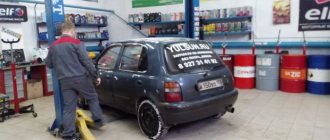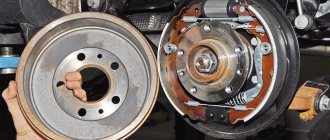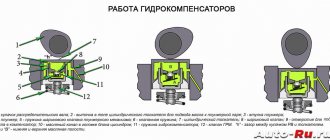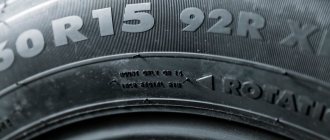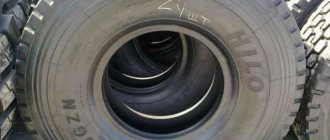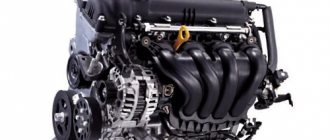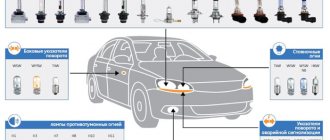The trade-in program is becoming more and more popular every year. Many car dealerships now operate on this principle, and this phenomenon has long gone beyond the automotive market. The trade in program allows you to trade in your old car for a new one and thereby partially compensate for the difference between the cost of the car. With this scheme, both the salon and the client benefit. The team of the publication "AutoFemida" will tell you about all the intricacies of the procedure. Read the following article and you will learn how trade in works.
Sell what you bought
At the end of the working day, my husband suddenly called: “Get ready and come to me, I’m in the salon, I sold your car!” — after such words, I automatically looked out the window. No, she’s standing there, small. But she obediently finished her business and went to the car dealership. Trade-in is a familiar word to me, I understood what was happening right away.
First we need to explain what it is. Trade-in, roughly translated from English, means mutual exchange. The essence of the transaction will be as follows: the owner of a car sells it to a car dealership, while getting the opportunity to buy a new car, taking into account the amount of this sale. If the car was in good condition and its age did not exceed 3-4 years, then you can count on compensation for most of the cost of the new acquisition.
My husband decided to exchange my Opel Corsa for a new car. Naturally, with an additional payment for the difference in price. I've done this more than once. When I first brought it to the salon to take a “tag”, my friends looked at me with bewilderment: “They’ll cheat you there, why are you losing money? Put it on the market and wait!” But I didn’t want to wait, and besides, the new car wasn’t going to wait for me...
Trade-in, roughly translated from English, means mutual exchange
And I didn’t lose that much then—five to ten thousand at most. But I saved so much time and nerves: I did two things at the same time: I sold my old car and bought a new one.
Today the situation is even more interesting. Dealers need to somehow attract customers. Discounts and gifts are a good story, but people are already used to it, but a bonus when selling an old car is something new. So, if the market price of my Corsa (2007 model year, mileage 45 thousand km) is 380-385 thousand rubles, then the salon accepted it for 410 thousand. Naturally, this money goes straight towards the new car, you can touch it You can’t keep up with them. And although it seems like the same discount on a new car comes out, psychologically it’s nice. In addition, deregistration of the car from the traffic police is a gift.
So that there are no unpleasant surprises
More and more often you can come across the question “Is it necessary to deregister a car when using the Trade In program?” This question belongs to the category of legal issues and requires a more detailed analysis, since there is no answer to it in the exact wording.
When buying and selling, the seller is no longer responsible for deregistering the car; this responsibility is transferred to the new owner, that is, the buyer.
When exchanging a car, there is a regular transfer of the car to the car dealership, not a purchase or sale. It turns out that there is no need to deregister the car. This should also be done by the new owner who purchases this car in the future.
However, if the new owner of the car does not take care of removing and re-registering the car, then fines will be sent to the address of the old owner. But here the issue should be resolved through the authorized bodies with the presentation of a car exchange agreement concluded with the auto center.
The next point to mention is the process of assessing the condition of the car. The appraisal is carried out directly at the car dealership, and given that the company strives to make as much profit as possible from the transaction, there is a possibility that the initial price may be greatly underestimated simply due to the fact of the company’s commercial activities. The car dealer will strive by any available means to do everything so that the client has to pay as much as possible.
The solution may be to evaluate the car in specialized centers. There will be no need to deceive the car owner, which means the assessment results will be more honest and objective. After receiving a document containing the clear value of the appraised car, the client can go to the car dealership. However, they may not accept this document, citing the fact that the company trusts only its experts. This is their right and there is no arguing about it.
There is another option. A car owner can use the services of several auto centers, where they can use the Trade-in program, compare and choose the option that offers the greatest benefit for the car owner.
The last point that I would like to touch upon is the agreement signed between the client who has used the Trade-in program and the company providing this service. Despite the fact that the client can refuse the transaction at any time, it is possible that the company will try to gain more benefits for itself using the same agreement. In particular, this is the inclusion in the contract of an unspecified clause or even small print.
This trouble can always be avoided if the client reads it very carefully, asks questions, listens carefully and observes. If the contract still contains such a clause or fine print, and it clearly does not bring you any benefit, but only the opposite, you should immediately ask for an explanation and demand that this clause be excluded from the contract. A refusal to exclude such a clause indicates that the car owner will have to drive away with his old car in search of another, more honest buyer.
What is the essence of the exchange transaction?
But still, the question about trade-in often arises: how does such a system work? Why is this beneficial? For the car owner, the benefit is saving time during the sale. The whole process will take no more than 4 hours, whereas independent implementation sometimes takes months.
There will also be savings in terms of money - you won’t have to spend money on preparing the car and posting advertisements for sale. Plus guarantees of the legality of the transaction - everything in the salon will be extremely transparent.
For a car dealership, this is an opportunity to profitably sell a used car. The acceptance price will differ from the market price - usually by 10-12%. The difference is the organization’s compensation for pre-sale preparation, during which sometimes some parts are replaced (and this also costs money). Even if a car is accepted as scrap metal, spare parts for the interior are never superfluous.
Advantages and disadvantages of purchasing a car through the Trade-In program
What is Trade-In at a car dealership?
How can I return my car this way and get a new one instead? The implementation scheme is that the motorist gives away his car that meets certain interior requirements, and in return receives a new car for an additional payment. When deciding whether to use the Trade-In program, most motorists are interested in what reviews there are from real people who already know how this system of purchasing a car works.
Among the main advantages of this method of buying a new car are the following:
- Significant time savings when selecting a new vehicle;
- Providing assistance in paperwork from the employees of the car dealership where you purchase a car under the Trade-In program;
- Saving time on pre-sale preparation of a vehicle - no need to search for a buyer, correct existing defects of the car and spend money on other actions that accompany the independent sale of a vehicle;
- The possibility of refusing to complete a transaction if the terms of the contract do not suit you;
- The ability to apply for a car loan to repay the amount that is the difference between the price of your car and the new one you purchase at a car dealership;
- The opportunity to receive a discount on a car as part of periodic promotions at car dealerships under the Tradein program.
Are there any disadvantages to this method of implementation and the simultaneous purchase of a vehicle - is this ultimately beneficial to citizens? Among the disadvantages of buying a car through the Trade-in program, the following factors are noted:
- There is a limited number of vehicles that can be purchased in this way - you choose only from those cars that are offered by a specific car dealership that meets the basic conditions for exchanging cars;
- Inability to order a car of a certain brand, model or configuration;
- The need to complete a transaction in one day - most motorists are satisfied with this indicator, but, nevertheless, it causes some inconvenience for some car owners.
Advantages of Trade-In
The benefits that a car owner receives when using a trade-in service are obvious. A car dealership relieves him of the need to sell an old car on his own: coming up with and publishing ads, taking dozens of calls and going to shows with capricious buyers, and then haggling until he sweats.
The benefits that a car owner receives when using a trade-in service are obvious. The car dealership saves him from having to sell his old car himself.
In addition, with the right choice of dealer, the risk of fraud when completing a purchase and sale tends to zero. Little things like the absence of the need to do the so-called pre-sale preparation of the car and go with the buyer to the traffic police to re-register at the latter’s request are also on the list of positive features of the trade-in.
- You save your time, do not waste it searching for buyers and demonstrating the car
- You immediately receive a new car for use, without waiting for the sale of your car
- You are insured against risks associated with fraud during the transfer of your car to a new owner
- You save yourself from completing a package of documents and the associated risks
- You do not contact potential dishonest Buyers and avoid possible legal proceedings in the future
- You do not waste time and money on pre-sale preparation of your car
- You get the opportunity to restore documents related to the sale of your previous car.
And this approach, as a rule, eliminates the need to be without a car while buying a new one - if the model you need is in stock at the dealer, you come to him with an old car and leave with a new one.
Of course, to purchase this new car, you will also have access to a car loan - this can also be considered a plus. And finally, one of the main advantages at the moment is that the dealer provides an additional discount on a new car if it is purchased at a trade-in.
Here the amounts vary greatly from brand to brand and from model to model: on a budget car you can save about 10-60 thousand, on a middle-class car - 50-150 thousand, and sometimes a good half a million can be knocked off the price tag of a premium sedan or SUV.
Trade-in at car dealerships. Pros, cons, deception scheme
Selling a car is a nerve-wracking experience for any car owner. And in order not to waste their time and nerves, they shift their burden of selling the car to another person, or rather a commercial organization.
And by the way, they regret it later.
Trade-in appeared on the country's car market quite a long time ago, about 20 years ago. Everyone is accustomed to such a scheme and believes that this is a completely “problem-free” situation for the car owner. But that's not true.
What do you need to know? When selling a car through a trade-in scheme, the car will lose a lot in value. Before concluding a contract, the dealer invites the car owner to look at the car at the car dealer’s service center. And this is not free, you will have to pay for it. Moreover, the inspection will be aimed at identifying inaccuracies in the car - for this price the car will be reduced even more, in the end it may fall by several tens of thousands.
Advantages and disadvantages. Like any other trade-in program, it has its negative and positive sides.
The advantages include:
- the opportunity to reduce the cost of purchasing a car by selling the old one;
- the exchange process is carried out in a short time;
- assistance from professionals who accompany the entire process, right up to deregistration and registration with the traffic police, which reduces time costs and eliminates waiting in queues;
- eliminating additional costs during pre-sale preparation;
- guarantee of the legality of the transaction;
- the possibility of refusing to sell if the seller of the car is not satisfied with the estimated value;
- guarantee of a new purchase in good condition, and in case of defects, they will be eliminated without cost to the buyer;
- bonus programs, the purpose of which is to attract more clients.
Disadvantages of trade-in:
- when selling independently, you can count on higher income;
- It is not always possible to purchase the desired car, because the exchange is made on a day that may coincide with a limited supply of cars in the showroom;
- There is no opportunity to order the required equipment or take part in the auction.
At the moment, our car enthusiasts have a lack of confidence in the program as a result of a lack of information about it. But all fears are in vain - the trade-in service is still in demand abroad and the showroom accepts any cars, regardless of their condition. During the assessment, attention is paid to checking the car for “cleanliness”, which is done to avoid troubles for the buyer later.
And are our dealers always honest?
One of the schemes of “cunning” managers. A client calls the dealership and asks how much they will offer for his old car. The manager asks a lot of questions and at the end names a price, usually a little less than the real one on the market. The client agrees and is hooked.
The trap is hiding in the discount! Almost all automakers have a system of discounts when using the trade-in option. Creative guys in salons came up with a scheme designed for simpletons. The manager names the price, certainly saying the words: “this month there is a discount of N thousand rubles under the trade-in program, we will buy your car for N thousand.” But in the end it turns out that the salon takes this discount for itself! The actual price will be less by the amount of the discount.
Explaining that the discount is also money and very significant, which the salon also seems to give to the client, but for some reason includes it in the price of the old car. But the manager does not talk about this either during a telephone conversation or after a preliminary inspection of the car! When going to buy a new car, the client expected to receive the agreed amount for the old one, and even get a discount on the new car, but as a result it turns out that the price of the old one has become less by the amount of the discount, and, alas, he will not receive the new one either. Double discount is a win for the salon.
The “surprise” is discovered when paperwork is completed, but the client may experience it after concluding a purchase and sale agreement for an old car. Due to trust in the dealership and the desire to receive a new vehicle, some buyers sign the contract without reading it. The scheme is designed for simpletons who buy budget cars.
By the way, in the event of a scandal, a smart dealer will insist on the legality of the contract, saying that it should have been read. The managers’ motivations for action are also simple: “we said that the price includes a discount.” But initially the client understood these words in his own way - the salon gives a price slightly lower than on the market, but he wins the discount amount, so the benefit is obvious, as it seemed to him.
Divorce is based on this different understanding!
Such guys have even learned to use all the achievements of psychological engineering - before completing the paperwork, they always show the buyer a new car, the manager praises it so that it will be difficult to leave the salon without it. The manager will repeatedly hint that the client could pick up the car today by adding the missing amount. The appraiser, at the stage of the decline in the buyer’s indignation, will even offer to go for “unprecedented generosity” and add a certain (insignificant) amount to the price of the old car.
Bottom line. So before purchasing a new car through a trade-in scheme, think several times whether it’s worth it. And if you still decide on this program, please be very careful when signing the contract. It is better to spend time reading all the fine print on the papers and discussing the deal in detail than to leave such a company deceived.
- Which car to choose in 2020? Diesel, Petrol or Electric?
See all photo news >>
Disadvantages of Trade-in
However, you should not assume that a trade-in is an absolutely ideal way to change a car: there are also plenty of disadvantages and nuances. One of the main ones is the low estimated value of the car you are renting out: the car dealership is very likely to pay a price below the market value for it.
And this is not a hoax: you should also soberly understand that the business needs profit, and your car will be put up for resale with associated costs. Of course, no one will repair it or do complex maintenance, but washing, dry cleaning and the salary of the manager of the used car department will be included in the potential profit for your car.
Therefore, be prepared for the fact that the offered price will be several tens of thousands of rubles less than those indicated for similar items in private advertisements.
Another feature of a trade-in that reduces its attractiveness is the limited choice and sometimes the imposition of a car. After all, if you want to drive away in a new car the same day, you need to choose one of those available at the dealer.
But here all the standard “tricks” of overly enterprising sellers can await you: they will persistently offer you a car that is “convenient” for them and convince you to install additional equipment, and often overpriced “extras” will already be installed on the car being sold without the possibility of them refuse, which significantly changes the final price tag and reduces the joy from the discounts received.
In addition, it is worth remembering that in a trade-in you can usually purchase not only a new car, but also one of those that were handed over to the car dealership by other owners
In addition, it is worth remembering that at a trade-in you can usually purchase not only a new car, but also one of those that were handed over to the car dealership by other owners. However, in this case, the purchase loses the charm of novelty and conventional ideality: you should not expect that, for example, a Ford car parked at a Kia dealer has been thoroughly checked and carefully serviced - such a purchase should be approached as a standard market procedure. And given that the requirements for cars offered for trade-in are low, the risk of encountering a rather problematic car at a car dealership is palpable. The only advantage in this case is the reduced risk of having “documentary” problems with the car: as a rule, dealers carefully check the cars accepted for trade-in for legal purity, and buying a credit or seized car from them is almost impossible.
Sometimes the question arises about trade-in: how to work according to the new rules for registration with the traffic police? In fact, the procedure for registration and deregistration/registration has become a little simpler. Now it is not necessary to deregister the car when selling it - you can do without it. According to the new rules, without numbers, sales cannot be carried out at all. Of course, you are allowed to keep the license plates on your car and transfer them to a new vehicle.
What attracts us to Trade In
- Minimal loss of time. The entire process of replacing a car when using such a scheme takes a few hours, and there is no need to worry about going through the procedures for registering the purchase and deregistering the old car. All prospects of queues at the traffic police will remain a concern for the car dealership.
- Savings on pre-sale preparation. When selling a car yourself, you will have to carry out pre-sale preparation. Depending on the condition of the car, its cost can range from several thousand to several tens of thousands of rubles. It is possible that you will have to spend additional money on advertising. And you won’t have to waste time on the sale, which, by the way, can take weeks. When using the Trade-in scheme, the car dealership accepts the car in its current condition, and before its subsequent resale, they independently carry out all the preparatory work, including repairing and washing the car.
- Transaction security. Using the services of an official car dealership completely protects the car owner from the risk of encountering scammers. All transactions are documented in accordance with Russian legislation, and there is no doubt about the honesty of the company, which simply does not make sense to lose a legal business due to the deception of several people. In addition, when carrying out such transactions, a person only needs to pay the difference in the cost of the machines, that is, he does not have to deal with large sums of cash. In addition, if you purchase a used car at a car dealership, you eliminate the possibility of purchasing a stolen or pawned car that will be confiscated by a court decision. There will also be no situation with the purchase of a car, in which serious technical deficiencies will emerge within a week. When working with used cars, car dealerships use a mechanism for a complete technical and forensic check of the vehicle.
- Possibility of lending. Today this is one of the most important advantages of the Trade-in scheme. The value of your old car can be considered as a down payment for financing. That is, the buyer does not even have to pay the difference right now. It turns out that you can get a new car without actually paying a single ruble right away. In addition, the procedure for applying for a loan is carried out directly at the car dealership, and there is no need to contact the bank.
- Government programs and discounts for Trade-in. For the umpteenth time, the state has stimulated the renewal of the domestic vehicle fleet by distributing significant discounts on the purchase of new cars. Now, for example, you can save from 40 thousand rubles. There are no restrictions; car dealerships even accept outright junk, which they can then sell for car dismantling yards or scrap metal. Of course, you can’t get a serious amount of money for such a car, but the owner will receive at least a penny in any case.
- Simply convenient car sales. Remember how much inconvenience it usually causes to sell a car yourself. And according to the Trade-in scheme, you only need to wait for the diagnostics to be carried out and complete the relevant documents. The car dealership takes care of all the hassles of re-registration with the traffic police, advertising, pre-sale preparation and the actual resale of the car.
- Small things as a gift. Of course, a serious reason to use the Trade-in scheme only because of the gifts that car dealerships give to customers is not worth it, but all things being equal, such a pleasant addition will never be superfluous. Gifts may include opportunities for free maintenance, roadside assistance certificates, consumables, and the like, which will never be superfluous for a thrifty motorist.
As you can see, such a scheme has plenty of advantages, many of them very significant. If we talk about disadvantages, then there are significantly fewer of them, and only one is global - the price.
In Europe, 80% of cars are sold through the trade-in system. Russia is still far from this figure
“Almost all cars are accepted for testing - in principle, there are no restrictions on age, mileage, or make,” says Andrey Malyshev, senior manager of one of the trade-in departments. — If somewhere they didn’t accept your old “six”, find another salon or hand it over under the state recycling program. The main thing for us is that the car does not have any violations of the body geometry, is in good working order and is legally clean.
By the way, when I say “new car”, this does not mean that it is completely new. Using the trade-in system, you can buy a used one at the same dealership, it will just be new to you. Everything will happen in one place, in a civilized manner and, most importantly, safely (the moment of transferring money in our country has always bothered me).
If you don’t need a new car, you can sell the car on consignment. Then the amount you receive will be a little “lighter”. For example, the same Corsa, if I put it up for sale, would bring me the market price of 385 and not a penny more.
If the car is sold at the price you suggested, then the commission will be from 5 to 10%. You can receive money for the car immediately after sale. The terms of the contract depend on the company and are individual for each machine. But, we repeat, any dealer is primarily interested in stimulating the sale of new models...
Used car price formula
The price of a particular car on the market only seems more attractive. How can you be sure that the car sold there is identical to the one in the showroom? One small detail can either increase or decrease the price of a car by several thousand. What are the additional options worth: heated seats and steering wheel, heated mirrors and glass, fog lights, rain sensors, parking sensors, sound equipment, etc., not to mention tuning.
The Central Scientific Research Automobile and Motor Vehicle Institute NAMI has long developed a methodology for calculating the cost of a car, it contains many positions and factors. Today it is used by most dealers.
FAQ
| Problem | What's the point | What to do |
| Trade-in is an official purchase and sale, which means there will be red tape with documents | We are selling our old car and buying a new one, so there is no exchange (in the legal sense!) here. This means that the old car is being sold, which entails an obligation to report for this transaction (more precisely, for the income received from it) to the tax authorities. This is where documents on the sale of an old car can come in handy. | Require the dealer to draw up a purchase and sale agreement and carefully fill out all documents. |
| It is necessary to respond to the requirements of the tax service | At any time, you may receive a request from the federal tax service to submit a declaration and pay income tax. | All documents regarding the sale of an old car must be kept for three years. |
| Income after the car is traded in must be declared | A) owned the car for more than three years. If the property was owned for three years or more, when selling it, income is not taxed at all. B) owned the car for less than three years. In this case, the income is taxed, but you have the right to a tax deduction in the amount of 250 thousand rubles from income. In addition, you can reduce the amount of your income from the sale of a car by the amount for which it was purchased. And since a car naturally becomes cheaper over time, the income received from its sale will be less than the cost for which it was previously purchased, so there will be nothing to pay tax on. | A) you do not need to file a return. B) file a tax return indicating the cost of the car when you purchased it and the amount received from the sale. Attach all documents: the first purchase and sale agreement and the agreement with the dealer on the trade-in transaction. |
| Cars are accepted for trade-in at prices below market prices | The car that the dealer will take as payment for a new one will be sold by him, so it must undergo full pre-sale preparation, including minor cosmetic repairs, washing, polishing the body, dry cleaning the interior and other operations to give it a marketable appearance. And on the technical side, a used car often requires some investment. And so that the dealer does not lose money, he makes all his expenses and some profit by reducing the price of a used car as much as possible when buying it back. | Go to several dealers, compare prices, always taking into account the configuration of the cars. If you don't like it, sell it yourself. |
| The redemption price changes during the transaction process | First, you will be given an approximate price. However, dealers do not give any written commitment; due to identified deficiencies, increased costs for pre-sale preparation of the car and its sale, etc., the price may actually decrease. | The advice is the same, but keep in mind that during the process of bargaining with a potential buyer on the market, the price may also change. |
Weaknesses of the Trade-in scheme
- Undervalued car. It is worth recognizing that you have to pay something for a lot of conveniences, and the price for all this is the estimated cost of the car. On average, car dealerships accept a car via Trade-in at a price that is 10-15% lower than what you could get for a similar car when selling it on the market. This difference is due to the need for the salon to carry out pre-sale preparation, as well as to make a profit from the transaction. At the same time, there is one trend. The newer the car offered, the less its cost differs from the market price, and accordingly, vice versa, the older the car, the greater the difference between the market and showroom price.
- Lack of popularity. In Europe and the United States, a similar system has been operating for a long time and successfully. Everyone without exception knows it, so the turnover of cars, and therefore the choice, is significant. In Russia, Trade-in is only at the beginning of its journey, and many have not even heard of the existence of such a scheme or have little idea of its real possibilities. If the turnover of used cars was high, then car dealerships would not try so hard to “jack up” the price and then Trade-in would reach its new level.
Let's summarize. The use of the Trade-in scheme in our country today is justified in cases where a relatively new car is being replaced, when you are covered by government programs or promotions, and also when you simply don’t want to bother.
- Home/
What is Trade In? What kind of exchange is this? Advantages and disadvantages
When handing over a car to a dealer, you must have with you:
If the car is not deregistered:
- PTS;
- Registration certificate;
- Civil passport;
- Inspection certificate (if any);
- Service book (if any);
- Manual (if any);
- Keys, 2 sets (for some cars 3 sets);
- Second set of tires (if available);
- Notarized power of attorney for company employees for deregistration.
If you deregistered the car with the traffic police yourself, then, accordingly, a power of attorney and certificate are not needed, but then you will have to provide transit numbers.
Benefits for the car dealership
Previously, trade-in was not a very profitable service for car dealerships - they paid taxes almost double
It is interesting that similar conditions for the sale of used cars have been offered before, but it has only become more or less widespread now. The reason is a change in the rules for sellers. At first it was not very clear how to work: trade-in of cars, according to the new tax rules, everything became much simpler. Is there a catch here? There were no problems.
Previously, trade-in was not a very profitable service for car dealerships - they paid taxes almost double. Now only income tax is paid. In addition, manufacturers want to sell even used cars of their own brands, so they almost force their official dealers to work according to this system. It has become easier for employees of car dealerships to work due to the new rules for registering cars.
Therefore, trade-in is currently gaining momentum, and the reasons for this lie not only in the advantages of the system, but also in the greater benefits that salons began to receive. Now it’s clear how trade-in works in car dealerships.
They benefit by selling used cars at a higher price, bringing them into good condition, but offering the former owner an initially lower selling price. For the latter, the benefit lies in the speed and transparency of the operation.
